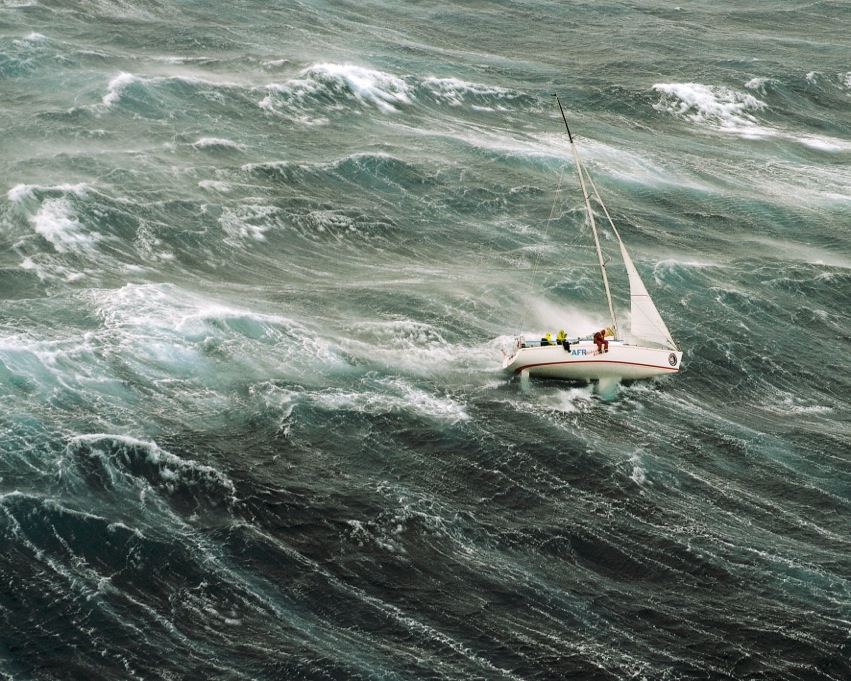Lessons from the Edge of Endurance
The Sydney to Hobart Yacht Race, 723 grueling miles, is one of the most demanding sailing events anywhere. In 1998, an unexpected massive storm hit at the wrong time. Waves reaching eighty feet and winds hitting 105 mph pummeled the vessels. Australia launched the largest search and rescue operation in history. In the end, six sailors lost their lives. One hundred fifteen boats started the race, but only forty-four finished.
Leadership expert Dennis Perkins and co-author Jillian Murphy decided to write the untold story of the AFR Midnight Rambler, the 1998 Hobart race winner.
Strategies Learned from Challenging Situations
1. Dennis, let’s talk about your new book Into the Storm: Lessons in Teamwork from the Treacherous Sydney to Hobart Ocean Race. Obviously, readers will compare the story of the AFR Midnight Rambler to your previous work and Endurance. How do you compare the two and what led you to the story of the 1998 Hobart? 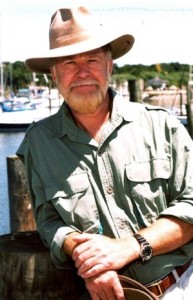
Writing about The Ramblers was part of my own journey to find ways of helping leaders and teams deal with daunting challenges. I use stories of adventure and survival to communicate critical strategies that can be used by people in any challenging situation.
The approach began when I was teaching at Yale University, and I began thinking about my voice in the world of leadership and teamwork. I had my own experience with survival in the U.S. Marine Corps, but I believe that success with any significant team challenge has the same underlying ingredients. So I began researching stories of groups that had faced the limits of human endurance, a place I call The Edge.
Dennis Perkins is the CEO of The Syncretics Group, a consulting firm helping leaders thrive in adversity. He’s the author of Leading at The Edge, the extraordinary survival story of Shackleton’s Antarctic expedition. His latest work is Into the Storm.
My previous book focused on the role of the leader, and I highlighted the story of Ernest Shackleton’s expedition to Antarctica in Leading at The Edge: Leadership Lessons from the Extraordinary Saga of Shackleton’s Antarctic Expedition. I believe the book — which has just been published as a second edition — has some important messages about leadership. But I had been thinking about a book that showcased the role of teamwork. I was particularly interested in teams that displayed what might be characterized as distributed leadership.
When I heard about the story of the Midnight Rambler, I decided to investigate further, and my inquiry eventually turned into my latest book. I believe that Into the Storm illustrates a set of strategies that are different from Leading at The Edge, but also very complementary.
Immersed in the Story
2. I want to talk about your research. “Immersive” is the first word that came to mind. What did you do to understand this story?
It’s hard for me to believe, but the process of writing the book started in 2003, so the book has been some nine years in the making!
I first corresponded with Ed Psaltis, skipper of the AFR Midnight Rambler, and subsequently visited Australia a number of time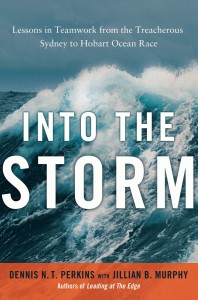 s to meet with members of the boat’s crew. I interviewed each member of the team for a documentary, and I got to know a number of sailors from other boats. I also interviewed one of the rescuers, Kristy McAlister, who saved the lives of two sailors in the 1998 race.
s to meet with members of the boat’s crew. I interviewed each member of the team for a documentary, and I got to know a number of sailors from other boats. I also interviewed one of the rescuers, Kristy McAlister, who saved the lives of two sailors in the 1998 race.
In the process, I was truly impressed by the extraordinary leadership and teamwork that I found on the Rambler, and other boats as well. I was also inspired by my conversations with John Walker, who at age 86 became the oldest skipper ever to do the Sydney to Hobart Race.
My co-author, Jillian Murphy, and I interviewed a number of other extraordinary sailors: Adrienne Cahalan, navigator of Wild Oats, who holds five world speed records and is a veteran of 19 Hobarts; Roger Hickman (“Hicko”), skipper of Wild Rose, who won the 1993 race and many other sailing trophies; and Neville Crichton, owner and skipper of the “supermaxi” Alfa Romeo. All these “sailing greats” took the time to share their insights and expertise.
Although I learned a lot by listening and talking, I also realized that there is no substitute for hands-on experience. I decided to do the race myself, and in 2006 sailed to Hobart with Peter Goldsworthy and his crew. It was a great experience, and it gave me the opportunity to do more field research — some of which involved investigating the celebration rituals of sailors at the Shipwrights Arms Pub.
At the end of all this research came the inevitable final step: writing the book. With the able assistance of Jillian Murphy, I employed my top secret writing formula: “A. Sit down, B. Write, and C. Edit!”
10 Strategies for Teamwork
3. After your research, your experience, your interviews, your observations and your total immersion in the race, you developed ten strategies for teamwork.
10 Strategies for Teamwork
1. Make the team the rock star.
2. Remove all excuses for failure.
3. Find and focus on the winning scenario.
4. Build a gung-ho culture of learning and innovation.
5. Be willing to sail into the storm.
6. Cut through the noise of the wind and the waves.
7. Find ways to share the helm.
8. Step up to conflict — and deal with the things that slow you down.
9. Master the art of rapid recovery.
10. Never give up — there’s always another move.
We can’t go through all of them, but I’d love to touch on one that seems counterintuitive. Number five says, “Be willing to sail into the storm.” That was a key reason for the success of the Rambler. Obviously it rates as important since you named the book Into The Storm. Would you explain that concept and also “dread risk”?
Calculated risk is a central theme in the book, and a critical strategy in creating a high performance team. You’ll notice the strategy is, “Be willing to sail into the storm,” instead of “Sail into the storm,” because I believe there is a significant difference between calculated risk and unnecessary risk.
Although the Midnight Rambler’s decision to sail into the storm was a big risk, one client observed that the greater risk would have been in turning around and running for safety. In the case of the Ramblers, his observation was absolutely correct.
When everything was taken into account, the safest course was, in fact, to sail into the storm. But for most people in a 35-foot boat facing waves twice that size and hurricane force winds, sailing hundreds of miles into a storm would have felt like an overwhelming risk. The Ramblers were able to weigh the odds and — in spite of the perceived danger — choose the option with the lowest risk.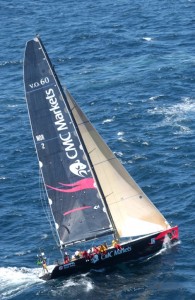
The issue is that there can be a tremendous difference between the psychological risk — what feels like the greatest threat — and the statistical risk based on a rational calculation of probabilities.
And there are also dread risks, low-probability but high-consequence events. These unfamiliar threats scare us more than familiar ones. The dread factor creates anxiety, and the more anxious we get, the less likely we are to correctly assess the odds. Although a great deal has been done to manage risk, whether sailing or investing, we are still influenced by emotions that are instinctive and automatic.
The reality is that life is filled with threats. The challenge is for teams to understand what to worry about, how to mitigate risk, and which risks are worth taking.
4. Is there one that you, after all of your work with companies, think is more difficult to master?
The culture of each of the organizations I work with is different. Consequently, the most difficult teamwork challenges vary as well.
The Team is the Rock Star
Making the team the rock star is particularly difficult in organizations that depend on a few specialized individuals who are credited with bringing in revenue — or who have a unique skill or talent. What often goes unrecognized, however, is the extent to which other members of the team enable these special individuals to be successful.
The full extent of this interdependence becomes obvious when other members of the crew get discouraged and quit, leaving the so-called rockstar floundering. One of the roles of the skipper is to ensure that the importance of the Rock Star Team is constantly reinforced. In addition, people’s willingness and ability to be part of a team need to be part of the selection process—a key metric used to assess potential members of the organization.
When to Sail Into the Storm
A second strategy that often surfaces is the issue of knowing when to sail into the storm. The crew of the AFR Midnight Rambler succeeded by sailing through the storm and, ultimately, winning the race. But sailing into the storm isn’t necessarily the right decision for every team. The key to this strategy is understanding the nature of the risk the organization is facing and then making a decision that fits the capability of the crew.
Teams that succeed are able to talk openly and honestly about the challenges that they face and then maximize their collective risk intelligence. When people feel threatened, it can be difficult to calmly look at the odds. But the ability to have productive conversations under pressure is a critical attribute of teams that win at The Edge.
5. How did your view of leadership change after this book?
When I first started writing the book, I wasn’t sure how to address t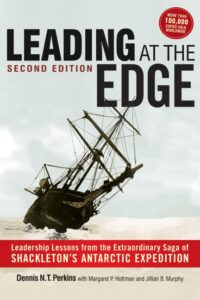 he role of the leader.
he role of the leader.
In my zeal to shift focus from leadership to teamwork, however, I encountered an unexpected hitch. The issue was framed perceptively by a friend and colleague, Chuck Raben. Chuck was concerned about the absence of leadership in my approach. As he put it in an email: “Exceptional teams do not emerge naturally or in a vacuum. Someone, notably the leader or skipper in this case, sets the tone and starts the ball rolling in so many ways. How can you go from ‘all about Shackleton’ to almost ‘nothing about Psaltis’? I realize that you’re focusing on teams in this piece, but the role of the leader was conspicuously absent.”
Chuck was right. I had been looking at the world in a binary way, as if leaders have the choice between being Ernest Shackleton — a charismatic, legendary figure — and something far more pedestrian. With this alternative view, the leader was more of a group facilitator than an Ernest Shackleton.
As I reflected on Chuck’s comment and my own experience, I decided that I needed to be less rigid in thinking about teamwork. My perspective on Teamwork at The Edge needed to be one that acknowledged the reality that leaders — including skippers on boats — have a very special role.
6. Your book Leading at The Edge is a must read leadership book. I love “The Edge” concept. I’ve interviewed athletes who push their bodies to the edge like triathlete Chrissie Wellington, considered the world’s leading female endurance athlete. Describe the edge and how it can be applied in business.
Top athletes absolutely push their bodies to The Edge, and their training, dedication, and commitment to their sport have many things in common with successful executives and teams. As Chrissie Wellington said in an interview with CNN, “Training for a race is like riding a roller coaster — you experience highs and lows, ups and downs, and more peaks and troughs than the New York Stock Exchange.”
I think of The Edge in two ways — in terms of survival and in terms of performance.
In the first case, The Edge is those situations in which an individual, team or organization is pushed to the outer limits of endurance with survival often at stake. There are numerous examples of such situations in adventure and survival stories. And of course, in today’s global, hyper-competitive economy, many leaders and their teams either have faced, are facing, or expect to face their survival Edge. These are situations that are ripe with adversity. They require courageous leadership and exceptional teamwork to avoid disaster and create a new platform for success.
It is clear, however, that The Edge is also about pushing to the outer limits of performance, and this is the second way I think of the concept. Even when on stable footing, today’s leaders are under pressure to improve performance, find new ways to grow, and increase both their top-line and bottom-line. This is only possible if leaders are able to tap the reservoir of human potential that exists within the organization. At the performance Edge, great leadership and teamwork are required to tap that potential and successfully navigate change.
7. Let’s talk about you. It seems your whole life centered on the study of leadership. You were a midshipman at the Naval Academy, then commissioned as a second lieutenant in the Marines. You served in Vietnam; you went to Harvard Business School, and then obtained a Ph.D. at the University of Michigan. You were a faculty member at Yale; you have a successful consulting company. During your career path, when was it that you decided to make leadership your focus?
People who look at my career path may think that I should have been enrolled in a career course at Yale instead of teaching one! But for me, each choice that I made was the logical one at that point in my life.
At the Naval Academy, I was impressed by the Marine officers who could meet and exceed the standards set for the midshipman. That was important, and the sense of esprit de corps that defines the Marine Corps drew me in. I was also influenced by John F. Kennedy’s words, “Ask not what your country can do for you—ask what you can do for your country.” I decided that what I could do for my country was to volunteer for the Marine Corps.
Every Naval Academy graduate who was commissioned as a Marine second lieutenant wound up in Vietnam, so that part of my trajectory was no surprise. But the experience of being in combat was a crucible for me, and it caused me to look at leadership and teamwork in a new way. Psychologically, I felt as if I had gone through the wall that insulated much of society from the world I was now living in — a world in which inadequate leadership or poor teamwork had disastrous consequences.
At the Harvard Business School I studied organizational behavior, and I took graduate courses in the Department of Social Relations. I discovered that people actually made a living by thinking about human behavior, and I decided to get a Ph.D. in psychology. In retrospect, I believe that my journey in the academic world was part of quest to put my personal experiences in a broader context — to understand, intellectually, the things I had observed in The Crucible.
What I found was that many of the conceptual models that worked in an academic environment were pretty far removed from anything that made sense from the vantage point of a Marine company commander. And, truth told, the view of the world I developed as a Marine in combat will always be more powerful for me than theories designed to impress an academic audience.
When I decided to leave teaching and start my own firm, I reflected on what I had to offer. I asked myself some fundamental questions: What is my voice? How can I use my experience to help others?
As I pondered these questions, the answer seemed obvious. If I could take my experiences in The Crucible and share them with leaders facing other challenges, then I could use the lessons I had learned in combat and help others. And I also realized that I could apply the writing and conceptual skills developed in the academic world to shape my message. So my goal was to integrate two very different worlds, and to use this hybrid — I might even call it syncretic — approach in a positive way to make a difference in people’s lives.
Each step in this series of decisions was the next logical one, but — as a plebe at the Naval Academy — it would have been impossible to foresee how my life would unfold. In retrospect, however, I believe I’ve been able to integrate a number of unique elements to create a fulfilling career that I feel good about.
8. If we perused your bookshelves at home, what leadership or teamwork books would we find?
To answer this question directly I decided to look at my bookshelf to see exactly what I would find. As you might imagine, I have a number of books that can be found in the libraries of both leaders and academics: Jim Collins’ Good to Great is there, along with books by my mentor, Ed Lawler. One of my favorites is Treat People Right — something Ed always does.
While I have a number of books that would be explicitly classified as leadership and teamwork books, my library is filled with other volumes that would not normally be labeled as such. I have books on adventurers, ranging from a biography of Sir Francis Drake to modern-day mountain climbers. I have books on risk and books on politics such as Game Change and The Price of Politics.
It may come as no surprise that I have a number of shelves filled with survival stories, especially stories set at sea — I guess my Naval Academy roots have taken hold. And then there are other parts of my life that are reflected in my books: Dynamic Aikido, focused on one of the martial arts I have studied. And there is a rather large section on the use of metaphor, including the Lakoff and Johnson classic, Metaphors We Live By.
In addition to the books on my library shelf there are two books in front of me on my desk. The first one was written by Hank Crumpton, who led the CIA’s effort to rout Al Qaeda and the Taliban immediately after 9/11. Hank and I share an admiration for the explorer Ernest Shackleton, and Hank was kind enough to send me his latest book, The Art of Intelligence: Lessons from a Life in the CIA’s Clandestine Service.
A second book on my desk is titled Team Spirit: Life and Leadership in One of the World’s Toughest Yacht Races. It was given to me on my recent trip to Australia when I visited with John Walker — the oldest skipper, at 86, to have completed the Sydney to Hobart Race. Now at 90 years old, John is still going strong and still sailing his sloop, Impeccable.
I treasure the inscription John wrote in the book: “for Dennis Perkins to ‘keep on edge’ from John Walker, Impeccable.” January 2013.
For more information: Into the Storm: Lessons in Teamwork from the Treacherous Sydney to Hobart Ocean Race.
